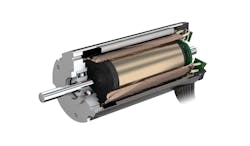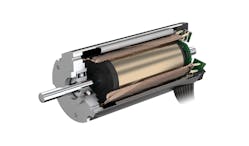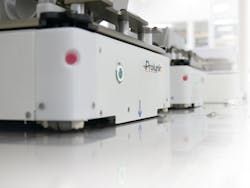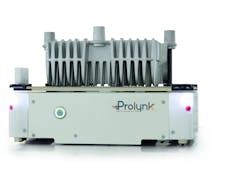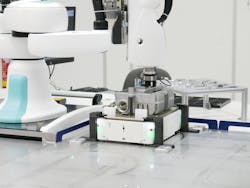The Internet of Things makes it possible to produce individualized products automatically – in batches as small as a single product. The path of the component through the assembly process thereby takes on an entirely new meaning. In the Adaptive Machine Platform Prolynk, manufacturing machinery and assembly stations can be configured and combined with total flexibility. The parts move individually from station to station, in a mini-taxi so to speak. FAULHABER supplies the drive technology for the small AGVs.
With the Prolynk technology, the configuration of the "assembly line” can be freely adapted or reconfigured, following changing requirements. The components no longer travel on a predetermined path, but instead take a taxi in the form of a small driverless transport unit (automated guided vehicle, AGV): "The part to be processed is thereby reliably transported to all required stations,” explains Antonio Sanchez, Chief Commercial Officer of Prolynk. "The processing steps, whether performed manually or by robots, can occur completely individually. Yet, the sequence is still automated.” A platform made of standardized tableshaped modules serves as the physical basis of the system. It consists of standardized plates and can be designed freely with respect to size and shape. Simple metal plates form the base unit and serve as movement surface. A variant of the base plate is equipped with fastening indexing units. For production steps that require high precision or for which a larger application of force needs to be compensated, they hold the vehicle and component in position. Here, the plate element also has an opening in the middle. This can be used to perform processing from below as well, as it corresponds exactly to the shape of the opening in the AGV.
Arbitrary sequence of the assembly stations
The Prolynk AGV is available in two sizes (325x230 and 450x350 millimeters); the maximum load is between 5 and 35 kilograms depending on the model. The component to be processed is secured for travel to the individual assembly stations via the opening in the middle. These stations can be freely attached, including manual jobs as well as tasks performed automatically by machines or robots , e.g., laser rule to function. The motion controllers of type MC 5004 P and encoders of the IE3-1024 series from FAULHABER play an important role here. They detect the rotation of the brushless motors of the BX4 series, which is used by the Prolynk electronic motherboard to do the odometry, calculate AGV position and manage motion control. The motor’s force is transferred to the drive belts of the wheels by planetary gearheads of the 32/3 design. "If a company decides on the Prolynk solution, the small AGVs become the heart of a production process. They must, thus, function completely reliably and with a very low level of maintenance, over as long a time as possible, securing a low total cost of ownership” says Antonio Sanchez, explaining the priorities for selecting the AGV components. "With the drive unit, the quality of the products had top priority for us.
For more information, visit www.faulhaber.com/en/markets/automated-guided-vehicle/.
